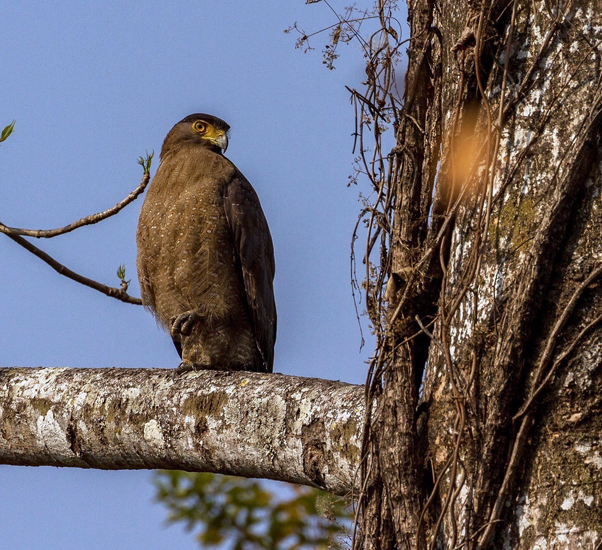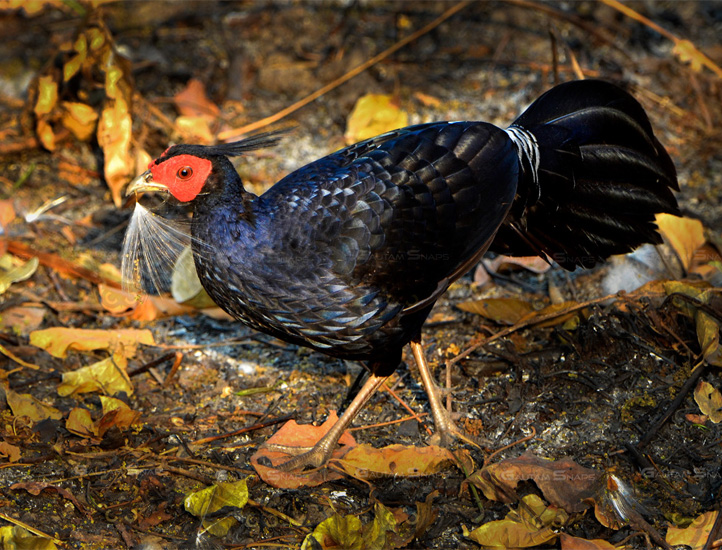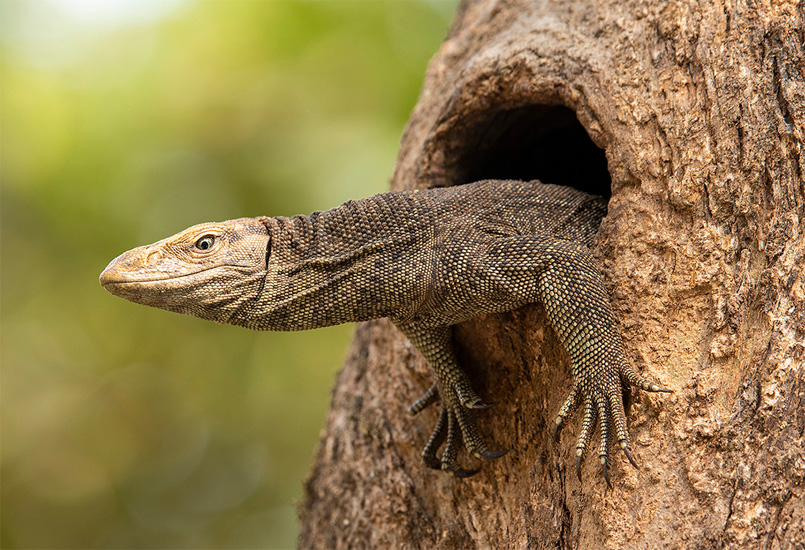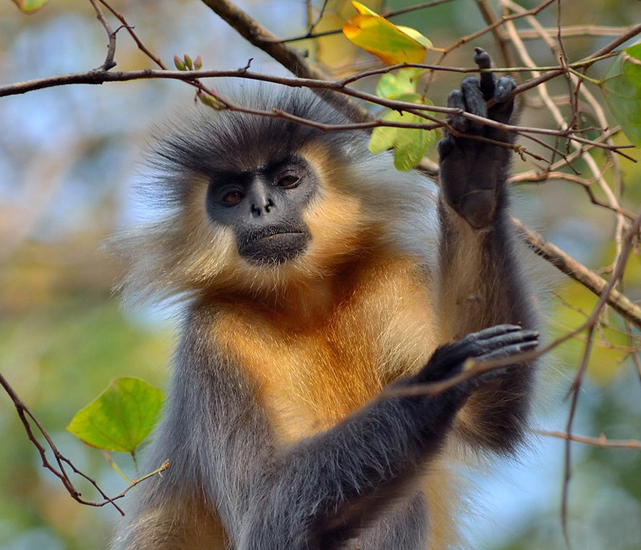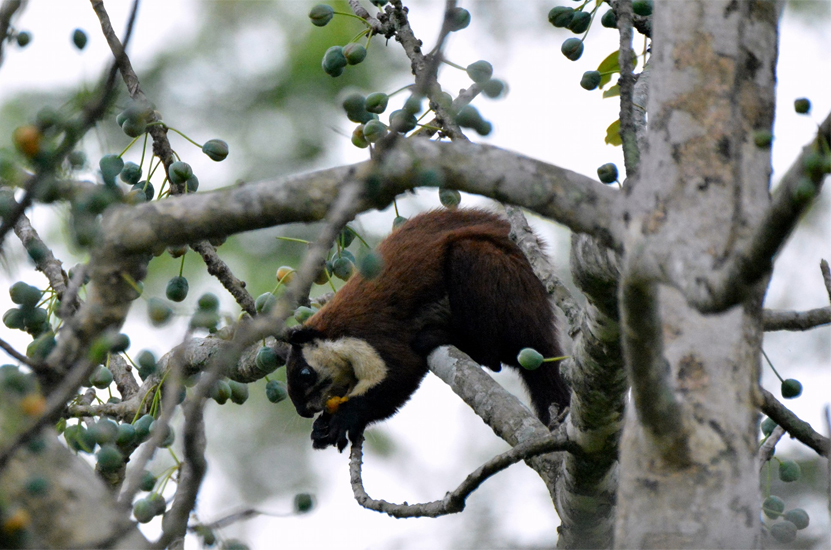Manas National Park
Posted July 02, 2022
Travel & Living
By Aniruddha
“Actually, it’s nature itself that creates the most beautiful pictures, I’m only choosing the perspective.”
— Katja Michael
This holds exceptionally true when you are in Manas National Park, Assam. Nature has given bountiful in the form of flora, fauna and the ever changing landscape of Manas. Declared a World Heritage Site by UNESCO in 1985, this national park harbours 22 endangered species mentioned in the ‘IUCN Red List in India.’
The topography of Manas National Park is as interesting as its natural habitants. Manas is spread upon densely canopied hills of Eastern Himalayas, which gently slope down into the Bhabar savannahs which then give way to terai tracts, extensive marshes, all criss crossed by the ever changing path of the dynamic Manas and Beki rivers. Extremely fertile nature of the soil and favourable climate make this ecosystem a biological hotspot of diverse range of flora which in turn supports an astonishing variety birds, (500 species to be precise), 60 species of mammals, 42 species of reptiles, 7 species of amphibians, out of these, 22 are rare and endangered species. It also houses atleast 400 varieties of wild rice growing naturally since thousands of years.
A total area of maybe 2800 sq. Km or more, Manas once used to be contiguous with other reserves like Ultapani, Chakrashila etc, all forests rich in biodiversity and wildlife. Even today, non-core areas of Manas stretch right upto the Kokrajhar district. The western part of Manas is still Contiguous with the Royal Manas National Park of Bhutan. Animal migrations take place between the two countries without a passport or entry permit. Some of these migrations are seasonal, viz. The Indian elephants go on holiday to Bhutan in April and return in September.
Table of Contents
-
Starting from
14,000 per person -
From
Barpeta Rd. to Barpeta Rd. -
Duration
4 days -
Instagram
#Manas
Follow Eventrivia
1 Why Manas

The flattering list of mammals go like tigers, Asiatic elephants, wild water buffaloes, one horned rhinos, black giant squirrel, capped langur, swamp dear, pygmy hog, smooth coated otter etc. Then there is the huge avifauna family adding a riot of colour and sweetest notes of cacophony across the forests. The Bengal florican, the great hornbills, pygmy wood pecker, sultan tit, racket tailed drongo, scarlet minivet, barred owl, jungle fowl, pea fowl, black naped monarch, khalij pheasant, brown oriole, emerald dove etc.
Manas National Park of Assam is flanked in the north by the beautiful Bhutan hills of Royal Manas National Park of Bhutan. The picturesque landscape of Manas, comprising of wooded hills, semi-evergreen forests, mixed dry and moist deciduous forests and the huge tracts of marshy land together with the dynamic Manas-Beki river system creates a great backdrop for photographing its exotic fauna and avifauna population.
Photographs allow for connections to be made and for time to pause to appreciate all the world has to offer
2 Journey Begins

Indian Gaur, Photo: Debashis Banerjee
A 3N/4D trip would be ideal to explore Manas. When you have 500 species of birds, 50 species of mammals and more roaming freely in the wilderness spanning the blue Bhutan hills, rivers, dense woods, Bhabar - Terai grass lands and swamps then you know for sure it’s an extremely pictureque landscape with ample photo opportunities. Now that’s quite a handful for the senses and lenses. No wonder, Manas has always been a photographers paradise.
We arrange pick up from Barpeta Road Rly station, which is about 22 km from Bansbari forest entry point and keep our guests at Mathanguri FRH which is deep inside the core area of the park on the bank of Manas river.
When it comes to jungle safaris, one would notice that browsing through the net yeilds repetitive results...the same touristy tour packages, over and over again. But wildlife and it’s unpredictable nature seldom fits into this package theory, right? For nature and photography enthusiasts, time, patience and a bit of luck is all that is needed for a really fullfilling and memorable endeavour in wild Manas.

Keeping that in mind, we have chalked out full day jeep safaris everyday, starting from as early as 5.30/6 am to late into the evening, say about 8 pm to make the best out of your stay inside Manas. Right on Day1, when you check in at Mathanguri FRH through the Bansbari Forest entry point, you will be able spend remains of the day, exploring the beautiful jungles and desolate river banks in a jeep safari from afternoon to sundown. Join us for the thrill next day at dawn, relish breakfast at one of the watchtowers inside the park and move out to other amazing locations as well as several other watch towers deep into the woods and grasslands for a rendezvous with nature. We’ll be back for lunch at Mathanguri FRH and hit the track again at around 2pm for some more breathtaking views of untamed wildlife.
The Buraburi watch tower has a salt pit in front of it and hoards of bison, wild buffaloes, tuskers, one horned rhinoes etc congregate there in the evening, specially after sundown.
Didn’t we say Manas is literally a photographers’ paradise? With so much of birds and beasts to cone across and capture forever in your memory (and lenses), Manas is never known to disappint the spirited nature lovers.
The Bodo, an aboriginal tribe of Assam, has a rich culture of music and textiles.
You should also visit the Bodo villages within the Manas Biosphere Reserve for a wonderful cultural experience.This ethnic community has a cuisine which is unique and delectable, it is a must for the ones who love to experiment with local platter. You can visit the scenic tea gardens also.
Never roam about on your own. Never venture out after dark. Please keep in mind that you are in the core area of the tiger reserve.
3 Stay

Mathanguri Forest Rest House
“Mathanguri Forest Resthouse”
The Mathanguri Forest Rest House is the best place to stay. Strategically sitting in the core area of the national park, right on the banks of Manas river, this rest house has clean & basic amenities, great food which is mainly simple local cuisine, solar powered system, which works till 10 pm and ample scope to spot the thriving wildlife all around. Being in the core area, you are not allowed to venture out in the dark. Tigers though hard to spot, do come in the vicinity and let their presence known by the deep majestic roars at night. Daytime is yours, you can go for guided safari for best photo opportunities and elephant safaris also. Jeep safaris are a must for birding and wildlife photography. The guides would take you to the best spots around, don’t venture out all by yourself.
To photograph is to hold one’s breath, when all faculties converge to capture fleeting reality. It’s at that precise moment that mastering an image becomes a great physical and intellectual joy
4 See | Do
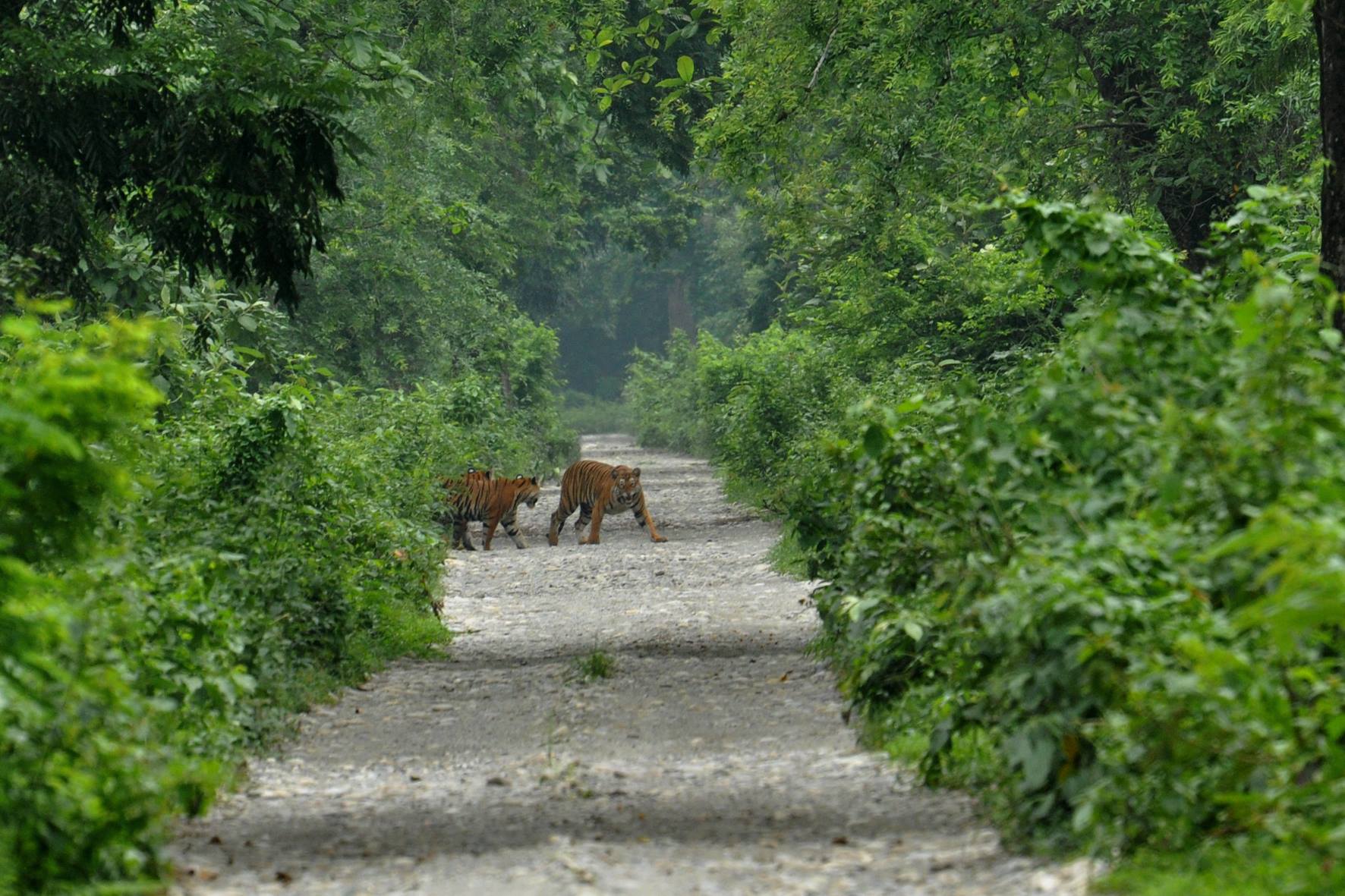
Photo: Atanu Bose

Black Capped Langur, Photo: Dr. Anirban Sinha
Look out for the Capped Langur, Pygmy Hog, Asian Elephants, Hog Deer, Wild Water Buffalo - all listed as endangered or vulnerable on IUCN’s Red List. If you are lucky, you may even encounter a leopard or black panther and even a tiger. You can ask your safari jeep driver to drive up to Panbang village (a small settlement in Zhemgang district of south Bhutan) in Royal Manas National Park, Bhutan. Though this international border check-post is unmanned, it is always advisable to carry your passport or another form of photo identity. The village is about a one-hour drive away, through the hills and by the Manas river. The main attraction is a hanging bridge over Manas river.
Manas is heaven for bird-watchers. There’s a good chance you’ll get to see the Long-tailed Broadbill, Silver Breasted Broadbill, Sultan Tit, Brown Oriole, Pygmy Woodpecker, Scarlet Minivet, Crested Serpent Eagle, Changeable Hawk-eagle, Red-headed Trogon, Bengal Florican and a lot more.

Bodo lady busy fishing near Bansbari entry point, with a conical bamboo strainer.
The story of hope.
Manas biosphere reserve is famously blessed with a plethora of astounding flora and fauna. But do you know that the villages of the ethnic Bodo community sorrounding Manas also add some thrilling notes to your wildlife experience in the form of authentic Bodo cuisine, music, handicrafts etc that too in a very self-sustainable way? This alternative source of income resulted in reduced poaching activities and thus garnered praise for aiding conservation process inside the national park. Among the Bodo tribes, bamboo and cane are an integral part of the daily lives which is evident from the village haat or temporary markets, held weekly.
Don’t forget to shop for traditional Assamese handloom fabrics from the nearby Boro village at a very reasonable rate, directly from the community. Shop for mekhlas ( Assamese-style saris) and Assamese gamchas (handloom towels). The villages are a 5-10 minutes’ drive from Bansbari.
Adopt the pace of nature: her secret is patience
5 Notepad

Illustated Map by Rohan Chakravarty, Copywrite: Wildlife Trust of India

Photo: Mustafa Khan
What to Pack
– During the summer, carry loose cotton clothes, a hat/cap, sunglasses and sunscreen.
– In winter, carry layered warm clothing, a jacket, woollen cap, muffler, and gloves. You should carry light warm clothes even in March, as it can be quite chilly out on early morning and evening safaris.
– Don’t forget spare batteries for your camera and a power bank to charge your mobile because you are staying in Mathanguri FRH which are running by the solar system.
– Binoculars for birdwatching.
– A bird-watching field guide.
– Mosquito repellent.
– A torch for emergencies.
– Emergency medication and prescription medicines.
Good to Know
– Barpeta Road is the nearest town with ATM, pharmacies, and petrol pumps.
– All the major mobile phone networks provide moderate to good coverage outside the national park. However, in Mothanguri FRH you won’t get any mobile coverage.
– There are several watchtowers at various locations inside the jungle to observe wildlife movements. All of them have washrooms.
Nature never goes out of style
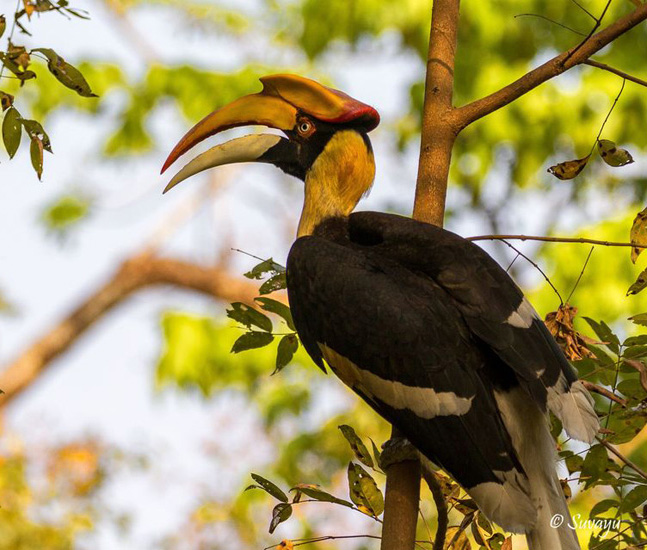
Great Indian Hornbill, Photo: Suvayu Paul
For Photographers
– A telephoto lens of at least 300mm focal length is ideal. However, 400mm is better, as there are plenty of birds in vivid colours in Kuldiha, but most of them are in the canopy. Also, you won’t be able to get very close to the wild animals. Because there aren’t that many tourists to this area, animals in the jungles of here are generally shy and don’t allow one to get close.
– Tripods are not very useful on safaris; a bean bag would be the best way to stabilise heavy tele-lenses in the jeep.
– Always try to carry a wide angle or kit lens to capture the interesting landscapes. You will get beautiful panorama shots of the savanna grasslands, and the Beki and Manas rivers.
In Between Safaris
– We can arrange a nature walk from Mathanguri FRH along the course of the Manas river. You will get to see Great Indian Hornbill, Kalij Pheasant, Fishing Eagles and Kingfishers etc. You might also spot Smooth-coated Otters fishing in the river. A short guided trail with forest guard through the jungle would be ideal to spot Capped Langur and Golden Langurs in the dense canopies.







